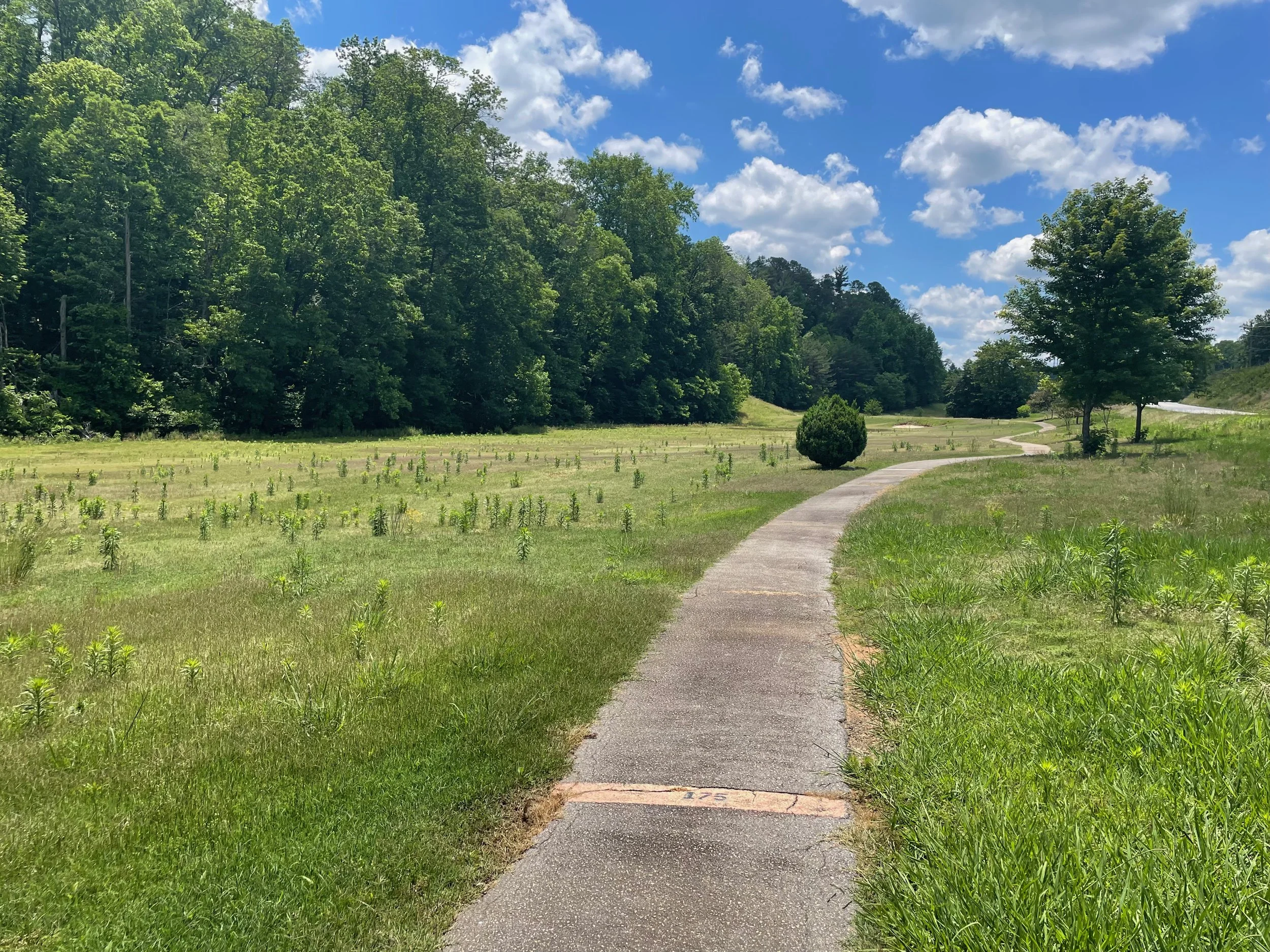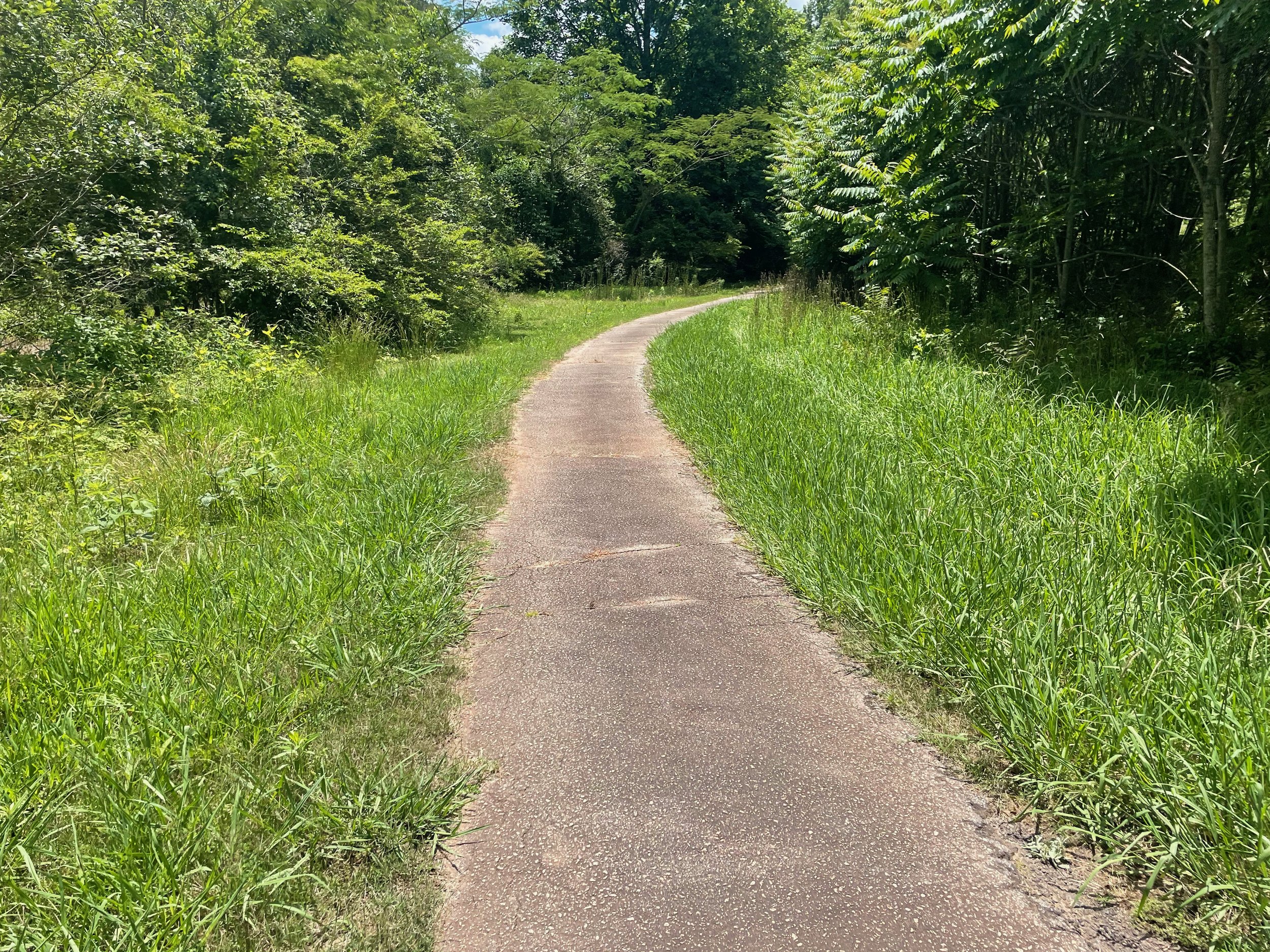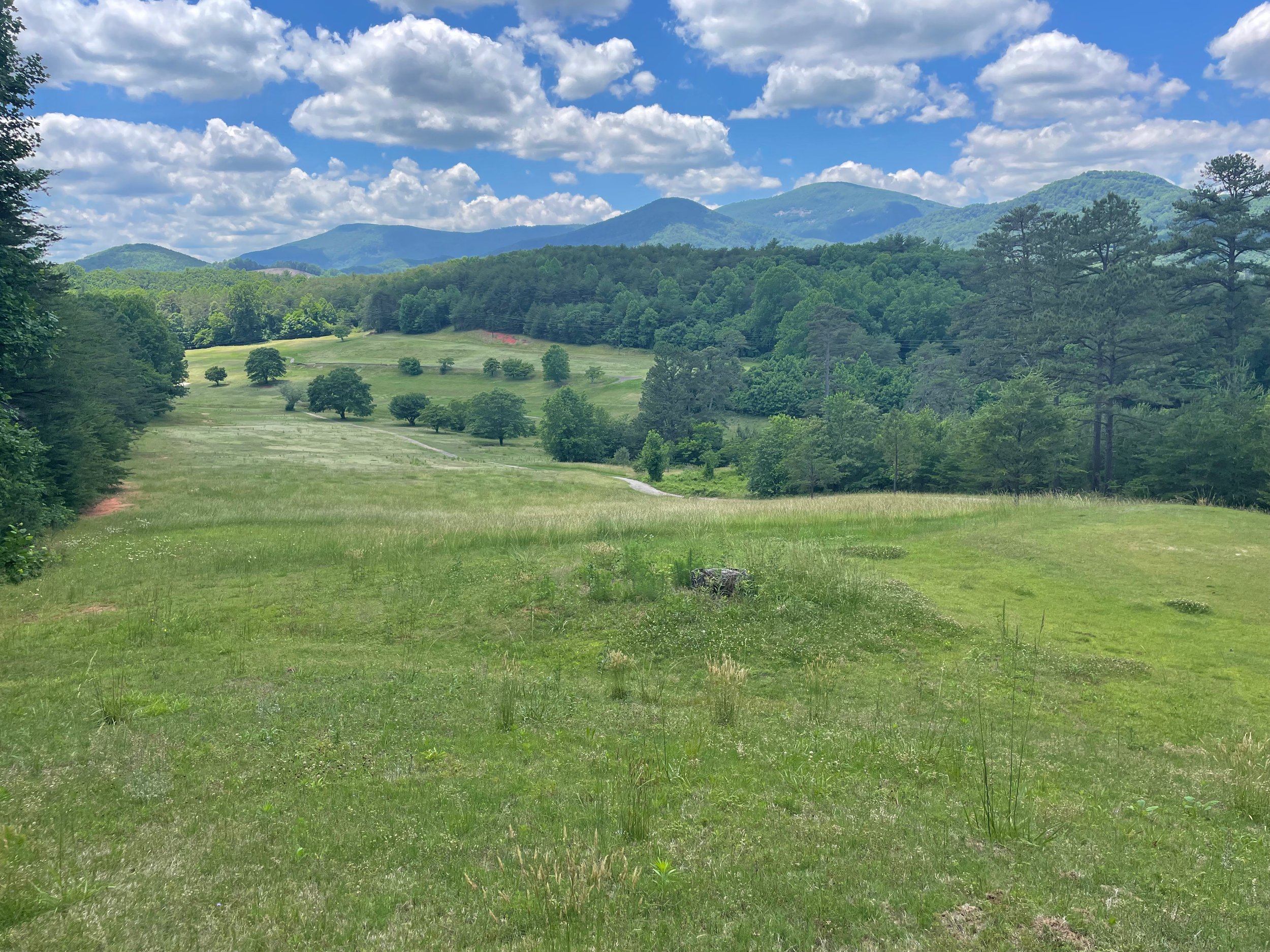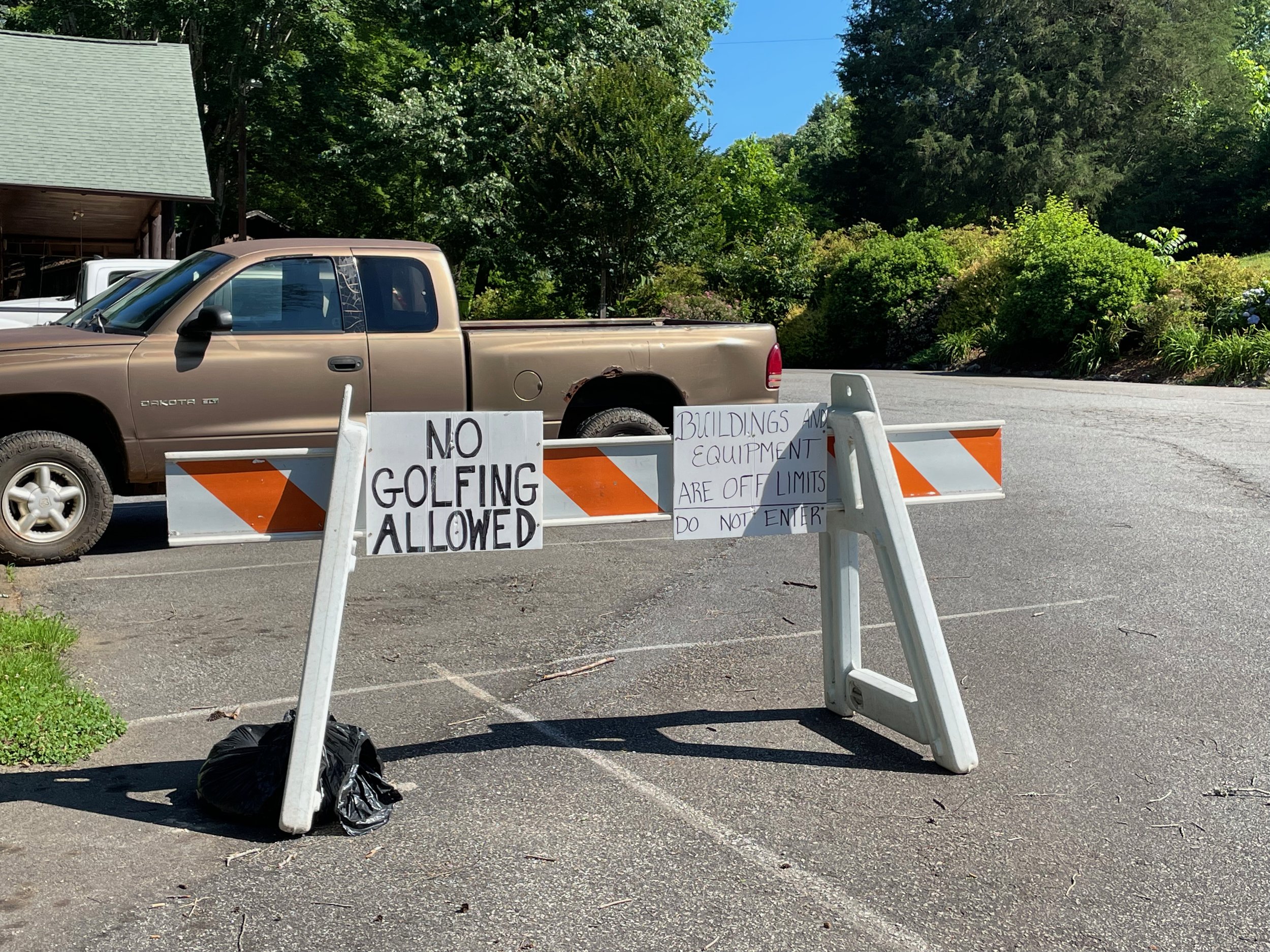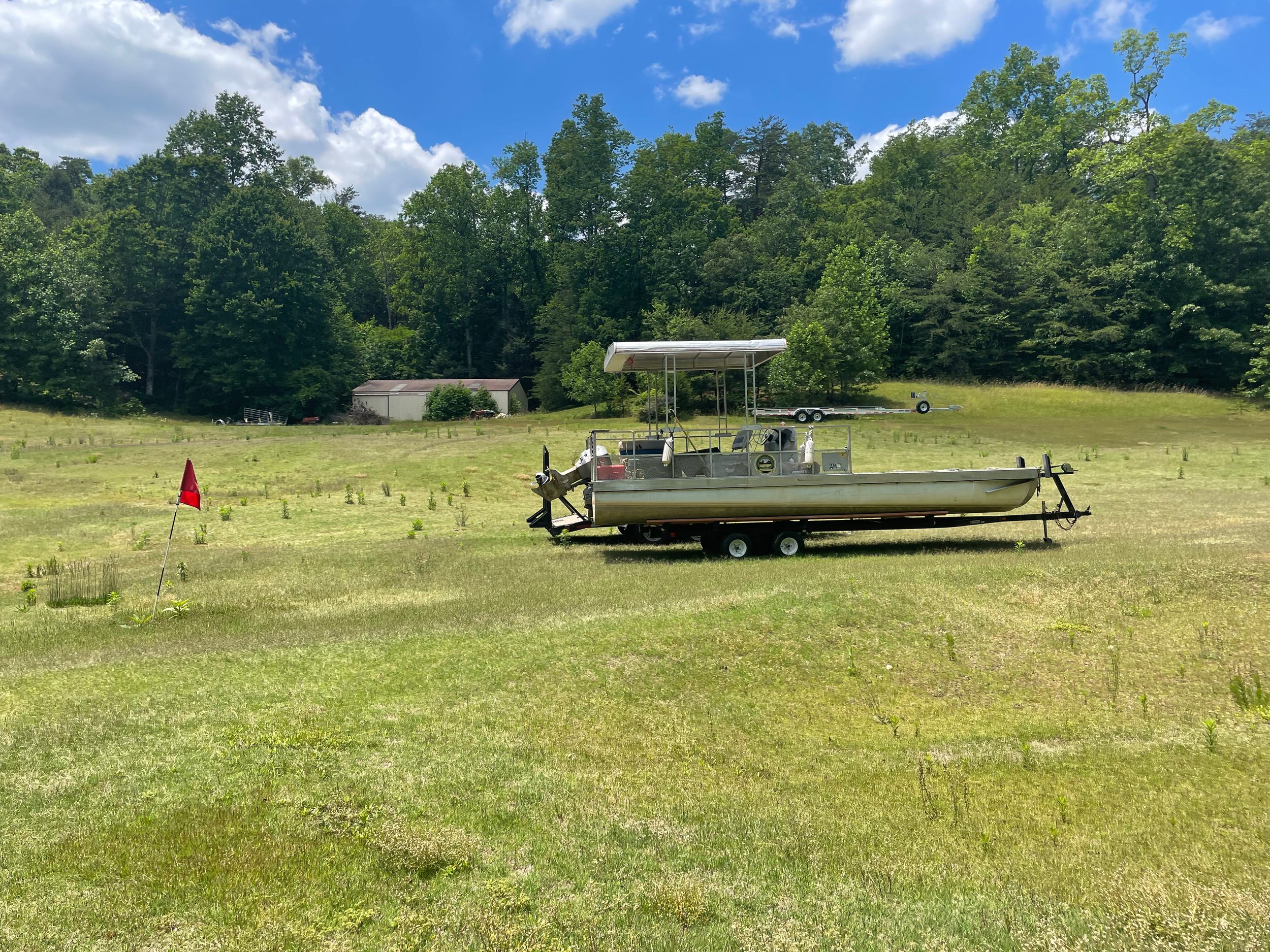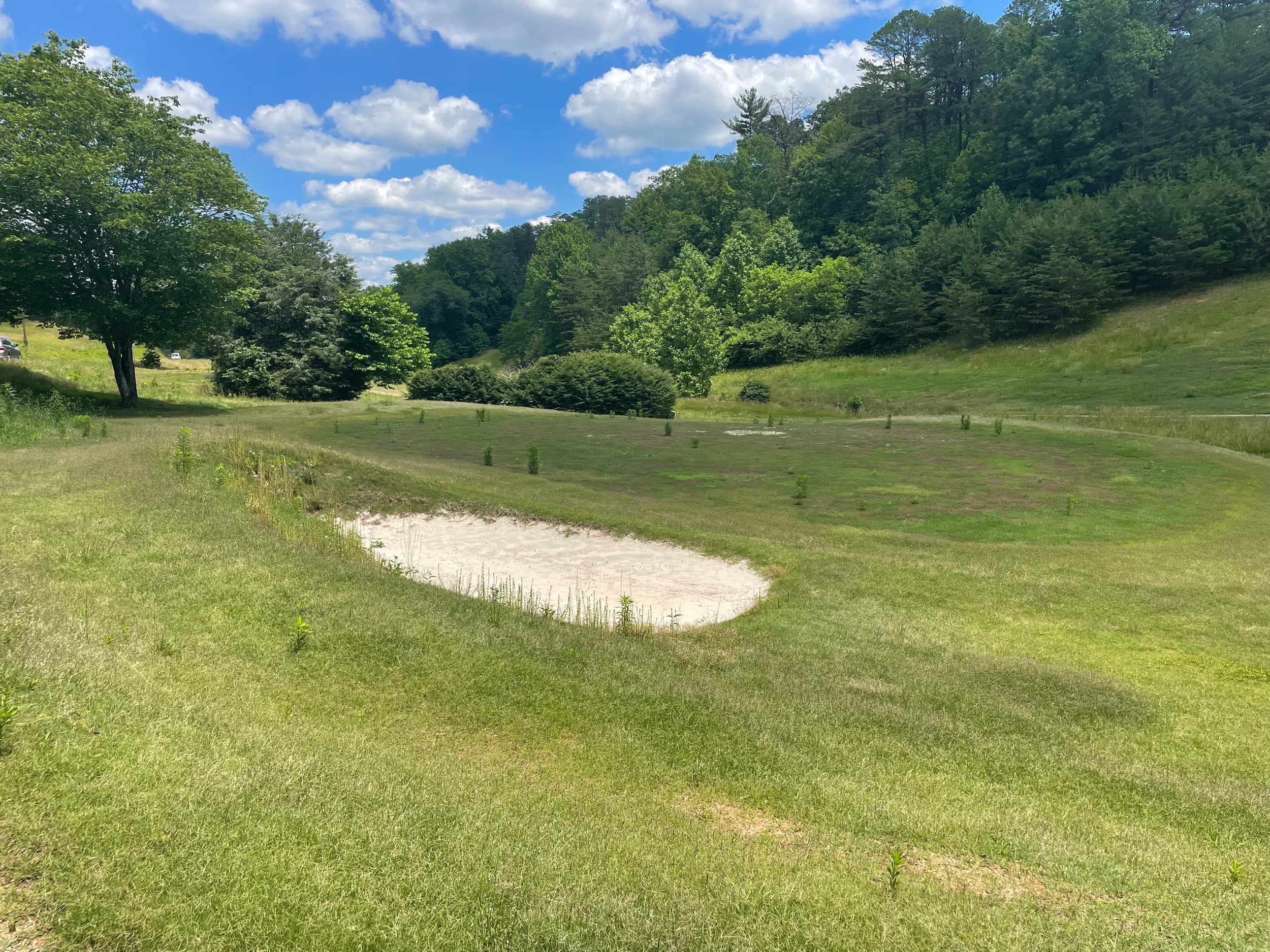Golf, Givenness, and Taking
Recently I went for a run on an abandoned golf course. I took two laps around the former 9-hole municipal golf course and photographed along the way.
Truth be told, I've always wanted to do something like that. I grew up playing golf and one of the things that always stuck in my mind was the cart path. What a strange thing that little ribbon of asphalt was! In a juvenile sort of way, I always thought it was fun how capricious and winding of a path it took when compared to the straight, regimented lines of the roads and highways of the rest of the world. The little path took its time bending around the natural and not-so-natural features of the golf course, all for the singular purpose of making travel in a golf cart easier.
Yet, is it a truly singular purpose? Are there other things that could be done on a golf-cart pavement track? Yes, of course. That's what I want to discuss today. Because the course was abandoned, yet not so terribly out of shape that it was dangerous to be on (i.e. snakes!) I was able to take a nice run on it. I enjoyed many of the benefits that the game of golf offers (enjoying nature in a manicured setting). I had a great afternoon. Let's take the three components of the title and think through each of them- golf, givenness, and taking.
Golf
I played golf pretty regularly for maybe three or four years growing up. It was a favorite pastime of my dad, so I joined in with what dad was doing. I had a few lessons over the years in the summers, and in middle school I got the opportunity to practice with my high school's golf team four times a week.
I think my appreciation for the game has only grown with time. There's the famous Mark Twain quote about golf, "golf is a good walk spoiled". Well, when I was young, it was not quite even a good walk. I honestly would've rather been inside playing video games. But, for a variety of reasons, golf is what I played many afternoons and weekends. And like many things merely tolerated in childhood, the seed once accepted with grumbling sprouted forth in adulthood with appreciation or even nostalgia.
What is golf, though?
Well, I won't claim to be a scholar on the history of golf, though I'm sure the fact that it is a surprisingly old sport (Wikipedia tells me 15th century Scotland) would reveal some very interesting twists and turns in its history. Let's think about some components of what golf is, what it requires to happen.
1) Golf requires a good bit of land to be devoted to playing golf: Setting mini-golf aside, golf requires a decent tract of land to be set aside solely for the purpose of playing golf. If you allowed runners on the fields and cart path during normal business hours, you may have some very unhappy golfers and some very unhappy runners.
2) Golf requires a tremendous amount of resources: I found the minutes of a city council meeting with the information that the course was losing $50,000 a year. Golf courses are expensive to maintain both in the realm of money and natural resource. Golf courses are staggering consumers of water.
3) Golf requires people: In order for "golf" to be "played", people must play it. Golf has no existence other than people coming together to engage in the activity with an agreed upon set of rules. Sure, there are rule books for golf, but I would argue that the essence of golf does not consist in its rules, but is essentially tied to the actual activity of a handful of folks going out with sticks and balls to whack them around in a space designed for the purpose.
4) Golf lives outside: Similarly to the need for land, golf is an essentially outdoor activity. There are indoor driving ranges, and indoor golf simulators, but the activity of golf is associated closely with being outside and engaging in the activity in an outdoor space designed for the purpose. I would be surprised to learn of a full 18 hole golf course in an indoor space, a course which makes no compromises or concessions and provides an identical experience to a golf course you can find in most major cities and towns.
Most photographers (at least the ones I've met, and the one I am) love to photograph abandoned spaces. There is a simple voyeuristic pleasure in seeing man made order yield back to the order imposed by nature. But that was what made the golf course so interesting- the golf course itself is an imposition of nature, onto nature. It is a simulacra of nature, in a way. So to see the borders of rough and fairway basically disappear, to see the manicured greens disintegrate, to see tee boxes only as faint suggestions- this was interesting.
While this is all well and good, I got to thinking about some other stuff. Specifically, a golf course being overgrown and unused may be goof for the runner and the pensive photographer, but it's not good for golf.
Taking
As I ran through the former golf course, I found myself reflecting on the fact that while the absence of people trying to play golf but the remnants of the cart path made this golf course good for running, the fact that it was slowly becoming overgrown meant that it was no longer (or, was diminishingly) good for golf.
Author Andy Crouch describes culture as a horizon of possibility. Golf is certainly a cultural production- it is an activity enacted by people, but it requires an ordering of land such that the "horizon of possibility" of playing golf is, well, possible. Culture is a complex and interconnected web of social, economic, logistical, knowledge-based and other factors which, in this instance, mows the grass and tends the earth in a way that makes golf possible. You hit a ball, you watch it fly, you see it land in some short grass, bounce and roll straight. You do this 70 or 80 or 110 times in an afternoon, and you have played golf.
But as I ran I saw fairways that looked less than fair. I saw greens that had weathered away, interestingly, revealing their substrate and the pains that it must take to create a green which is suitable for putting. I saw no "holes" into which a ball could be hit, indicating your score for that hole and prompting you to move on. In other words, you couldn't play golf.
In other words, the local government which had both established this golf course, maintained it for the possibility of playing golf, and finally ended its useful lifespan of a golf course now definitively said "do not try to play golf here." Its form as a golf course seems to invite playing golf even in sub-optimal conditions, yet this sign implores you with all force that a local government can muster to not even attempt it as an activity.
I'm always a bit on edge when moving around anything abandoned. As the social constructs which make activities suitable and inviting go away, making a space abandoned rather than not abandoned, there are any number of threats which can enter into the vacuum left behind by the fact of its occupation. Wild animals, dangerous plants, unsavory activities, people that want to be concealed and not found, etc. Yet this was a beautiful space. I found out later that it was actually set aside as a simple sort of park- a "green space". I saw some men walking in a treeline and saw later it was adjacent to a larger park and nature trails. I saw some people playing with their dog. Clearly, taking a run on the cart path was now within the reasonable realm of activities someone might do in that space.
The fact was that this land, once "taken" for golf was now being taken for another purpose entirely. There is the sense that it was being "taken back" by nature, but this would not be an accurate way of speaking. Think of it- golf is a manicured and somewhat anesthetized form of nature, but it is still nature. The fairways are real grass. The trees are obstacles and real trees at once. One cannot pluck the experience of golf entirely out of nature, even as "unnatural" as grass in that state is.
Golf works with a great varieties of givens, which I'll talk about in a moment, but I want to speak briefly on the other "taking" in my little excursion- the taking of photographs.
Taking a photograph is many things to many people, yet we cannot escape the fact that it freezes a representation of something from the moment that it was taken. The taking is somewhat of a branching path. From the moment the representation stems off from the reality of the thing, there is a divergence of appearance. If you went back to the golf course as soon as I've published this piece, it may not look so different. If you are reading this five years after I've published it, chances are that this once abandoned golf course has either been set aside for some other purpose or has passed through the stages of plant succession and has turned into a proper meadow or young forest with very few vestiges of its golf course past. Yet, my photos will look exactly the same. Ontologically they have not changed, yet the thing they refer to has.
This makes a photograph a rather strange contrast to the ongoing dialectic between nature and the social order that is necessary to play golf. It's not as if the photograph becomes a thing of fixed and immutable meaning and characteristics, some sort of time-traveling totem. Photographs fade and are destroyed or deleted (or even lost due to poor archiving!). Our societal relationship with photographs change as a photograph which meant something earlier can now mean something completely different. And yet we generally have this idea of photographs that they are "taken"- a frozen moment in time to which we can return to for any number of reasons, from lust to nostalgia.
What a strange diversion from the topic of golf courses! Yet in this I think is something worth considering. I think it's actually a key to understanding why photographing abandoned spaces is such a tickling pleasure. We intuit that the spaces we move about in are not permanent. We intuit that our bodies age and degrade along with the bodies of those around us. When we look at something abandoned, left to the courses of nature (becoming overgrown, worn) and human nature (vandalism, disrepair) we can see in real time the degradation. We know that this is not the state of affairs that was intended for this space or this object. The horizon of possibility is narrow- we can titilate ourselves with imagination of what it looked like in the past, or we can sepculate or even lament on the state of degradation it may reach in the future. Or we can take a photograph, and in so doing, we feel as though we have taken a record of these charming thoughts we've had But all we've taken is a photograph of narrowed possibilities. Narrowed givens.
Givenness
The world is a place given to us latent with possibility. I think we are often prone to thinking of the world as mere value-neutral "raw material" with which we are the first actors bringing forth some kind of order, but that is simply not the case. Instead, let's look at the two cases of things being given to us- the golf course as a cultural entity, and the world itself as a thing of matter and substance.
The golf course in question was undoubtedly a cultural product. Even in its degraded state, it's a cultural product. I have seen the government records of the lineage of that golf course, and neither the matter of its creation nor its abandonment were matters of chance or caprice. The thing was made because people decided it would be good to have a golf course there, and it was abandoned and the horizon of possibility was closed to golf because people decided it was not good to have a golf course there.
As I walked into the space of this decades-long negotiation, I wasn't aware really of any of this. I just saw an abandoned golf course and wanted to explore. I brought forth something new- some photographs that would not have been made, and this piece of writing- from the given of the abandoned golf course. Yet it was really given- it was an "inheritance" if you will from the people before me who decided it was fitting and proper to have a golf course there and then to leave it.
Yet, even prior to the reality that there would be such a thing as a golf course, there were all the givens that gave rise to a golf course. Think:
In that spot and time in the world there was a desire and ability to play golf, and a knowledge of golf. A cultural, economic, demographic, climactic given.
In the world, in history there is such a thing as golf. People long ago decided that it might be an enjoyable past time to hit a ball around in such a way.
It occurred to me when running around this beautiful golf course that, well, the golf course was quite beautiful. There were vistas to look out from on the tee boxes. Great sweeping hills rose and fell away throughout the course. The course was responsive to and worked with the landscape in the area in charming ways. All of these things are rather fixed- it would have been too great an effort to move any mountains for the sake of a municipal golf course, so the course designers were responsive to the given characteristics of the land and unfolded some of the possibilities (golf being among them) that were latent in the land as they saw it at the time.
Is golf the only thing that could have been done there? No. Is it the best thing that could've been done there? Not necessarily. And by virtue of the fact that the golf course was now abandoned, clearly the conditions which allowed a golf course to operate there had also given up the ghost. Yet, the fact that a golf course exists was a new set of givens. The characteristics of the golf course were responding to the existing givens, and now new culture- playing golf (or later going for a run and taking photographs) was possible.
Perhaps you can just take a walk and look at untrammeled nature and have a similar experience to what I had, but I would submit that human cultivation and response to the natural environment necessarily adds (or unfolds) another layer of meaning from latent meaning that exists in the world. Trees are beautiful, meaningful things- so are grass and fields and mountains. Yet, they are filled up with more meaning as they are arranged, pruned, selected, and considered into a certain arrangement to make a golf course (or a nature reserve or a public park or a palatial garden).
What did all of this have to do with photography, again?
I think one of the most profound things a photographer can recognize is that things will not always be the way they look now. Whether by the physical decline of aging in people or the material degradation of things just breaking down, things never look quite the same. I don't mean to inject any sort of cynicism or fatalism, it's just a fact. And there may be qualitative improvement too- children grow up and unfold into expressive adults where they were just hints and notions of what they will become when they're young. Cities improve land and build new buildings and grow. Yet whether by degradation or improvement, things are always in flux.
This should seem quite obvious, yet the profundity comes with the recognition of its implications. I think many photographers (I certainly include myself in this!) tend to only stumble sideways into making a photograph which might really punch someone in the gut. What I mean here is make a photograph that really explores that gulf between what was the case when the photograph was taken and what is the case now. The more expressive of the present realities and the more those realities have changed, the more impact a photograph may have.
I think of this as "casting a photograph forward in time". With the allusion to fishing (and the uncertainty and often boredom that fishing entails), it's an understanding that we aren't sure what a photograph may bring about in the future. But when we look at what's in front of us, when we look at what has been given to us to see and interact with and photograph, then it creates a sensitivity in us to make a photograph that may have real impact later.
There are no sure bets with this, sorry!
There is the givenness of the world and there is then the taking of the photograph. Once you have taken the photograph, as soon as you display it in any serious way to the rest of the world, there is now a new set of givens which your photograph is a part of. The photograph now exists as something outside of yourself that others, or yourself, can now react to.
This gets into the interesting discussion of distribution and archival, but I think that that's a bit outside the scope of this particular essay.


